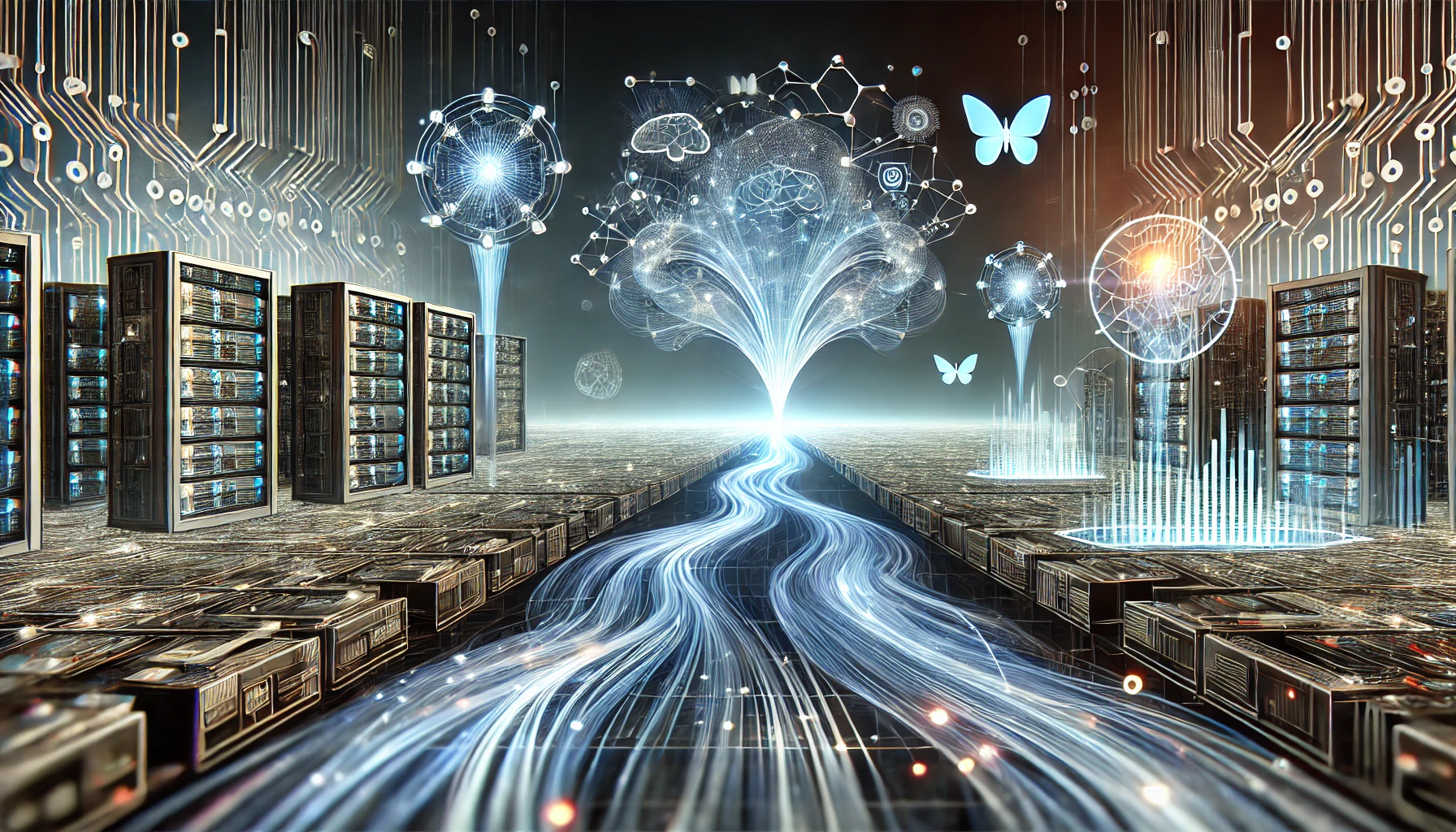How Combining RAG with Streaming Databases Can Transform Real-Time Data Interaction
While large language models (LLMs) like GPT-3 and Llama demonstrate impressive capabilities, they often fall short when it comes to accessing domain-specific data and real-time information. Retrieval-augmented generation (RAG) addresses these challenges by integrating LLMs with information retrieval systems, allowing for seamless interactions with real-time data through natural language. This approach has seen growing adoption across multiple industries. However, as the use of RAG expands, a significant limitation has surfaced: its reliance on static knowledge. This article explores this critical bottleneck and examines how merging RAG with streaming databases could unlock new applications in real-time data interaction across various sectors.
How RAGs Redefine Interaction with Knowledge
Retrieval-augmented generation (RAG) combines the strengths of large language models (LLMs) with advanced information retrieval techniques. The goal is to enhance a model’s internal knowledge by connecting it to vast and continuously updated external databases and documents. Unlike traditional LLMs, which rely solely on pre-existing training data, RAG enables models to access real-time external data, producing responses that are both contextually relevant and factually current.
When users pose a question, RAG efficiently scans through relevant datasets or databases, retrieves the most pertinent information, and generates a response based on the latest data. This dynamic functionality makes RAG significantly more agile and accurate than models like GPT-3 or BERT, whose knowledge can quickly become outdated due to their reliance on static training data.
The ability to integrate external, up-to-date knowledge through natural language interfaces has made RAGs essential for businesses and individuals, particularly in industries like customer support, legal services, and academic research, where timely and precise information is crucial.
How RAG Works
RAG operates through two key phases: retrieval and generation. In the retrieval phase, the model searches a knowledge base—be it a database, web documents, or a text corpus—for relevant information that matches the user’s query. This process utilizes a vector database, where data is stored as dense vector representations. These vectors are mathematical embeddings that capture the semantic meaning of documents or data. The model compares the vector representation of the query with those in the database to efficiently retrieve the most relevant information.
Once the relevant data is identified, the generation phase begins. The language model processes the query alongside the retrieved documents, incorporating the external context to generate a response. This two-step approach is particularly useful for tasks requiring real-time information, such as answering technical queries, summarizing recent events, or handling domain-specific inquiries.
The Challenges of Static RAGs
As AI development frameworks like LangChain and LlamaIndex have made it easier to build RAG systems, their industrial applications have proliferated. However, this increasing demand has highlighted some limitations of traditional static RAG models, particularly their reliance on static data sources like documents and PDFs.
One major limitation of static RAGs is their dependence on vector databases, which require re-indexing every time data is updated. This re-indexing process can greatly reduce efficiency, especially when dealing with real-time or constantly evolving data. While vector databases excel at retrieving unstructured data using approximate search algorithms, they are less effective with SQL-based relational databases, which handle structured, tabular data more effectively. This presents challenges in industries like finance and healthcare, where proprietary data is often created through complex, structured processes over time. Additionally, in fast-moving environments, static RAGs struggle to generate timely and relevant responses, as they rely on outdated information.
The Role of Streaming Databases in RAG
While traditional RAG systems depend on static databases, industries like finance, healthcare, and live news increasingly rely on streaming databases for real-time data management. Unlike static databases, streaming databases continuously ingest and process data, making updates available instantly. This immediacy is critical in fields where accuracy and timeliness are paramount—such as monitoring stock market changes, patient health, or breaking news events. The event-driven nature of streaming databases ensures that fresh data is accessible without the delays associated with re-indexing in static systems.
However, current methods for interacting with streaming databases still rely heavily on traditional querying techniques, which often struggle to keep up with the rapid influx of real-time data. Manually querying streams or building custom pipelines can be cumbersome, particularly when vast datasets must be analyzed quickly. The absence of intelligent systems capable of understanding and generating insights from this continuous data flow underscores the need for innovation in real-time data interaction.
This presents an exciting opportunity for a new era of AI-powered interactions, where RAG models seamlessly integrate with streaming databases. By combining RAG’s natural language generation capabilities with real-time data from streams, AI systems can retrieve and present the latest information in a relevant, actionable manner. Merging RAG with streaming databases could transform how we handle dynamic information, offering businesses and individuals a more flexible, accurate, and efficient way to interact with ever-changing data. Imagine financial giants like Bloomberg leveraging chatbots to perform real-time statistical analysis based on fresh market data.
Use Cases
The integration of RAG with data streams holds transformative potential across various industries. Some key use cases include:
Real-Time Financial Advisory Platforms: In finance, combining RAG and streaming databases can enable real-time advisory systems that provide immediate insights into stock market trends, currency fluctuations, and investment opportunities. Investors could query these systems in natural language to receive up-to-the-minute analysis, helping them make informed decisions in rapidly shifting markets.
Dynamic Healthcare Monitoring and Assistance: In healthcare, where real-time data is crucial, integrating RAG with streaming databases could revolutionize patient monitoring and diagnostics. Streaming databases could ingest patient data from wearables, sensors, or hospital records in real time, while RAG systems generate personalized medical recommendations based on both historical and current data. For example, a doctor could ask an AI system for a patient’s latest vitals and receive real-time suggestions for potential interventions based on recent changes.
Live News Summarization and Analysis: News organizations process vast amounts of real-time data. By combining RAG with streaming databases, journalists or readers could instantly access concise insights about unfolding news events. This system could generate context-aware narratives by relating current updates with older information, offering comprehensive coverage of fast-moving events like elections, natural disasters, or financial market disruptions.
Live Sports Analytics: Sports analytics platforms can benefit from RAG and streaming database integration by providing real-time insights during live games or tournaments. For instance, coaches or analysts could query an AI system about a player’s in-game performance, receiving reports that combine historical data with live game statistics. This would enable teams to make informed decisions on the fly, such as adjusting strategies based on player fatigue, opponent tactics, or game conditions.
The Bottom Line
While traditional RAG systems depend on static knowledge bases, integrating them with streaming databases enables businesses to leverage the immediacy and accuracy of real-time data. From real-time financial advisory platforms to dynamic healthcare monitoring and live news analysis, this combination offers more responsive, intelligent, and context-aware decision-making. The potential of RAG-powered systems to revolutionize these sectors underscores the importance of continued development and deployment, paving the way for more agile and insightful data interactions in the future.
Source: Dr. Tehseen Zia







